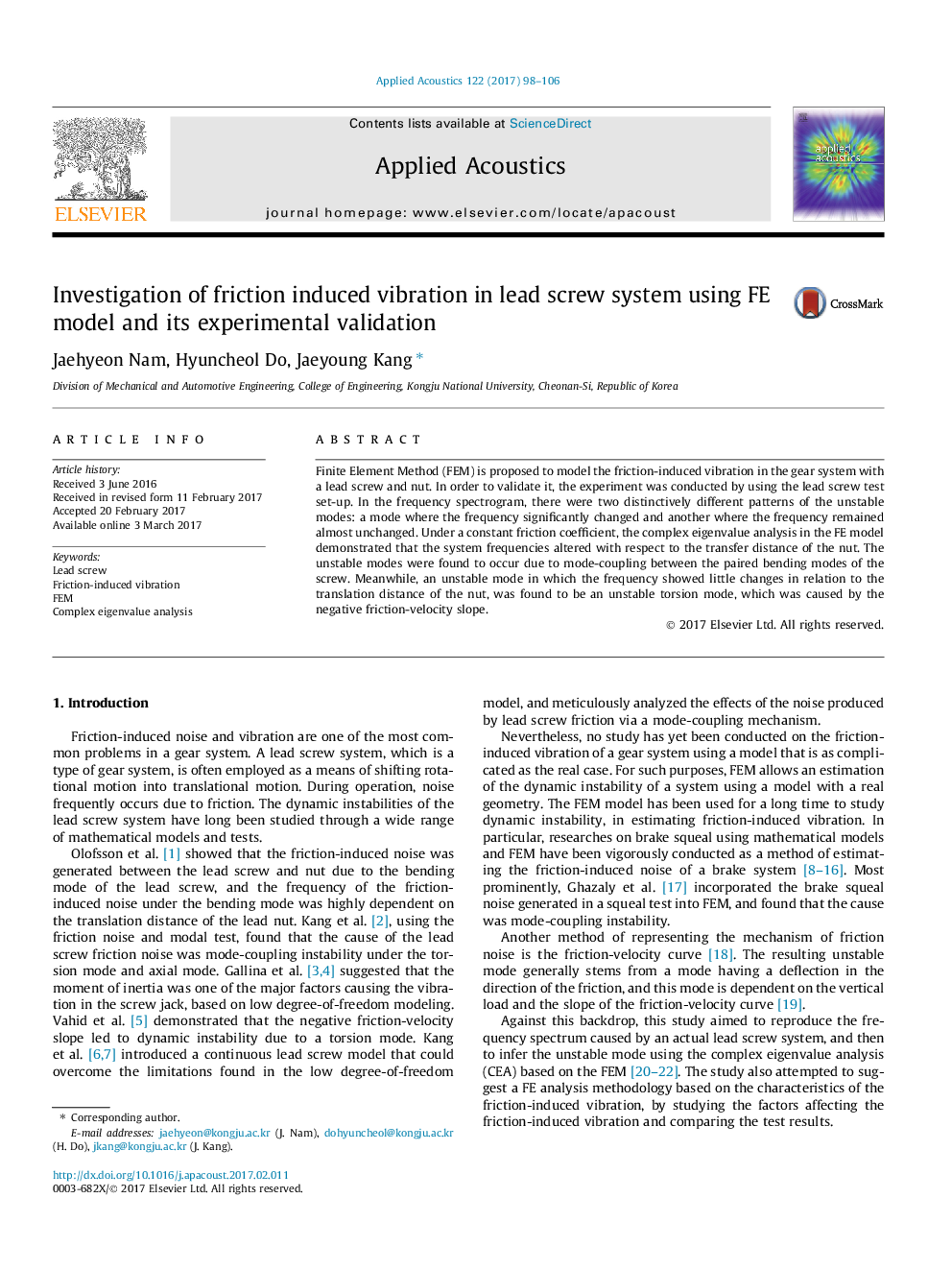| Article ID | Journal | Published Year | Pages | File Type |
|---|---|---|---|---|
| 5010723 | Applied Acoustics | 2017 | 9 Pages |
Abstract
Finite Element Method (FEM) is proposed to model the friction-induced vibration in the gear system with a lead screw and nut. In order to validate it, the experiment was conducted by using the lead screw test set-up. In the frequency spectrogram, there were two distinctively different patterns of the unstable modes: a mode where the frequency significantly changed and another where the frequency remained almost unchanged. Under a constant friction coefficient, the complex eigenvalue analysis in the FE model demonstrated that the system frequencies altered with respect to the transfer distance of the nut. The unstable modes were found to occur due to mode-coupling between the paired bending modes of the screw. Meanwhile, an unstable mode in which the frequency showed little changes in relation to the translation distance of the nut, was found to be an unstable torsion mode, which was caused by the negative friction-velocity slope.
Related Topics
Physical Sciences and Engineering
Engineering
Mechanical Engineering
Authors
Jaehyeon Nam, Hyuncheol Do, Jaeyoung Kang,
